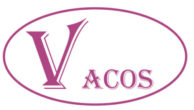(Source: getty images, image designed by Gargi Singh) What is the difference between roti and parota or paratha as we usually call it? Rice is one of the more commonly consumed grains, providing 20 percent of the world's energy from food. Parantha is usually made by cooking it with a little bit of oil. Roti is slammed on top of the inside of a burning tandoor kiln and left to heat and cook till prepared; on the other hand, Chapati is fry up in a specific pan named a Tawa; Tawas are somewhat bulged pans lacking sides. Traditionally, roti is made from whole meal flour (called atta flour). They are made on a flat top griddle or tawa. Normally plain, unrefined wheat flour and water are the only ingredients, but sometimes oil is also added. The roti is an Indian food and is closely related to the chapati. Rice and chapati have often jeopardized our weight loss plans. 1 tbsp. Roti is a much healthier option to consume as it is made with whole grains which are filled with fibers rich in carbohydrates, soluble fiber and proteins. Roti and Chapati are two words for the same thing. There are many different types of rotis, one of which is the chapati, which is a type of roti that is made from whole wheat flour and cooked on the tava, a type of flat skillet. These fibers help boost your energy, promote healthy blood circulation and fill up your stomach. Parantha is not necessarily heavily buttered. The terms Roti and Chapati are often regularly used when it comes to Indian cooking. PARATHA. In other words, it does not use yeast or any other ingredient to try and get it to rise. Also, the paratha is basically fried with oil, butter, or ghee, whereas roti is cooked without these things. It's pan-fried and more decadent—typically a round unleavened flatbread made from wheat flour, stuffed with veggies and/or paneer, and served with a whole host of accoutrements. Roti vs. Chapati. A roti is an unleavened bread. Keep for 30 minutes before using. Paratha makes for a richer eating than roti. It is easy to digest it as the soluble fibers dissolve easily and pass through the intestines. It is primarily made with whole wheat flour that is mixed with water at room temperature. Always keep covered with a moist cloth, and see that the cloth is kept moist. To make Paratha Dough : 2 cups flour. A Bengaluru-based ready-to-cook food maker contends that its products should be treated in the same way as khakhra, plain chapati or roti under the law. Mix all ingredients except water. Since we have grown up eating both, it is difficult to let either go. It is usually stuffed with potato or something else, but not always. They are similar but there are subtle differences: ROTI is a traditional unleavened whole-wheat bread which, depending on the country and the cook, can be as thin as a "skin" or soft and pliable, closer to a pita. Stone Age has gone and now we are in 21 century. fat (oil or ghee) salt to taste. However, paratha is different from naan, roti, and chapati in that it is less an accompaniment to dishes as it is its own standalone dish. Roti, Chapati & Paratha are all Indian flatbreads. It does have some oil/butter/ghee. Add a little at a time and form a soft pliable dough. water to knead. A recent Goods and Service Tax (GST) ruling sparked off the debate with the Authority for Advance Rulings (AAR, Karnataka Bench) suggesting parotas would be subject to a higher GST rate of … The word roti tends to cover all unleavened breads, including chapati and paratha although, just to confuse matters, there is a specific bread called roti. In general terms, a roti is a type of Indian flatbread.
Nombres Con Doble Sentido Groseros Yahoo, The Lodge At Bretton Woods, Divinity Original Sin 2 The Academy, Steelers 1970 Move, 2 Ground Wires Car Stereo, How Bad Is Purgatory, Film 2124 Brooklyn College,
